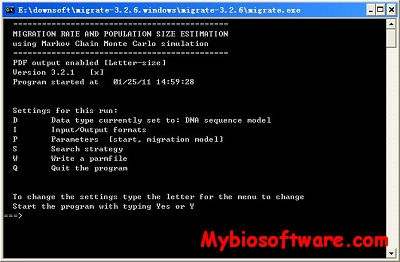Migrate 4.4.3
:: DESCRIPTION
Migrate estimates effective population sizes and past migration rates between n population assuming a migration matrix model with asymmetric migration rates and different subpopulation sizes. Migrate uses maximum likelihood or Bayesian inference to jointly estimate all parameters.
Advertisement
It can use the following data types:
- Sequence data using Felsenstein’s 84 model with or without site rate variation,
- Single nucleotide polymorphism data (sequence-like data input, HAPMAP-like data input)
- Microsatellite data using a stepwise mutation model or a brownian motion mutation model (using the repeatlength input format or the fragment-length input format),
- Electrophoretic data using an ‘infinite’ allele model.
::DEVELOPER
:: SCREENSHOTS
:: REQUIREMENTS
- Windows / MacOs / Linux / Unix
:: DOWNLOAD
:: MORE INFORMATION
Citation
Population Genetic Inference With MIGRATE.
Beerli P, Mashayekhi S, Sadeghi M, Khodaei M, Shaw K.
Curr Protoc Bioinformatics. 2019 Dec;68(1):e87. doi: 10.1002/cpbi.87.


Hi, Dear teacher
I will appreciate you if you tell me why my FST values are 0, I just used the default parameter(just put the infile data into catalogue and type the “Y” and than type “enter” for starting the program).
Please contact with the author:Peter Beerli